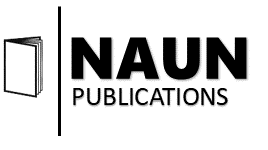Pneumatic Cylinders Controlled by Two Different Controllers, Arduino and MyRIO: an Educational Approach
Authors: Mihalache Ghinea, Mihai Agud, Mircea Bodog, Mark Antonio Agud
Abstract: Nowadays, new pneumatic equipment is becoming attrac-tive to many industries that are beginning to accept the idea of replacing their hydraulic equipment with pneumatic one. Beginner engineers and students have a hard time under-standing the differences between different controllers in the market and their applicability. This article provides in-formation to support the understanding of the way the elec-tronic control of stand-alone pneumatic systems works. This comparative study provides future specialists with the core knowledge concerning the influence that controllers have on the operation of pneumatic systems, as well as the principles of the controllers' utilization. The steps to take in controllers' utilization list the construction of the block diagram of an electronically controlled pneumatic system, followed by the simulation of the pneumatic system using modern software tools and ended by the assembly of the physical system and its programming by means of different classes controllers. If the control by pneumatic devices was still accepted, thus maintaining full-pneumatic systems on the market, the use of industrial electronic controllers would become indispensable both for more precise control of the systems and for increased industrial integrability. The compared results of a double-acting pneumatic cylin-der control using the Arduino Uno and MyRIO-1900 con-trollers (academic equipment and for stand-alone applica-tions) are presented. This way, the problem of pneumatic installations that requires equal forces to move the load in both directions is solved. The study performed a compari-son of the times and cycles of the piston rod, variables that are defined in many applications. These results are also compared with those obtained by simulation using Automa-tion Studio software (AS). The study was conducted to assess the interchangeability of both controllers in this common architecture. The research results are a step forward to-wards the implementation of electronic control in pneu-matic systems using industrial controllers and then towards the harmonization of the structures thus established with systems in Industry 4.0.
Pages: 110-120
DOI: 10.46300/9109.2022.16.12
International Journal of Education and Information Technologies, E-ISSN: 2074-1316, Volume 16, 2022, Art. #12
PDF DOI XML
Certification
